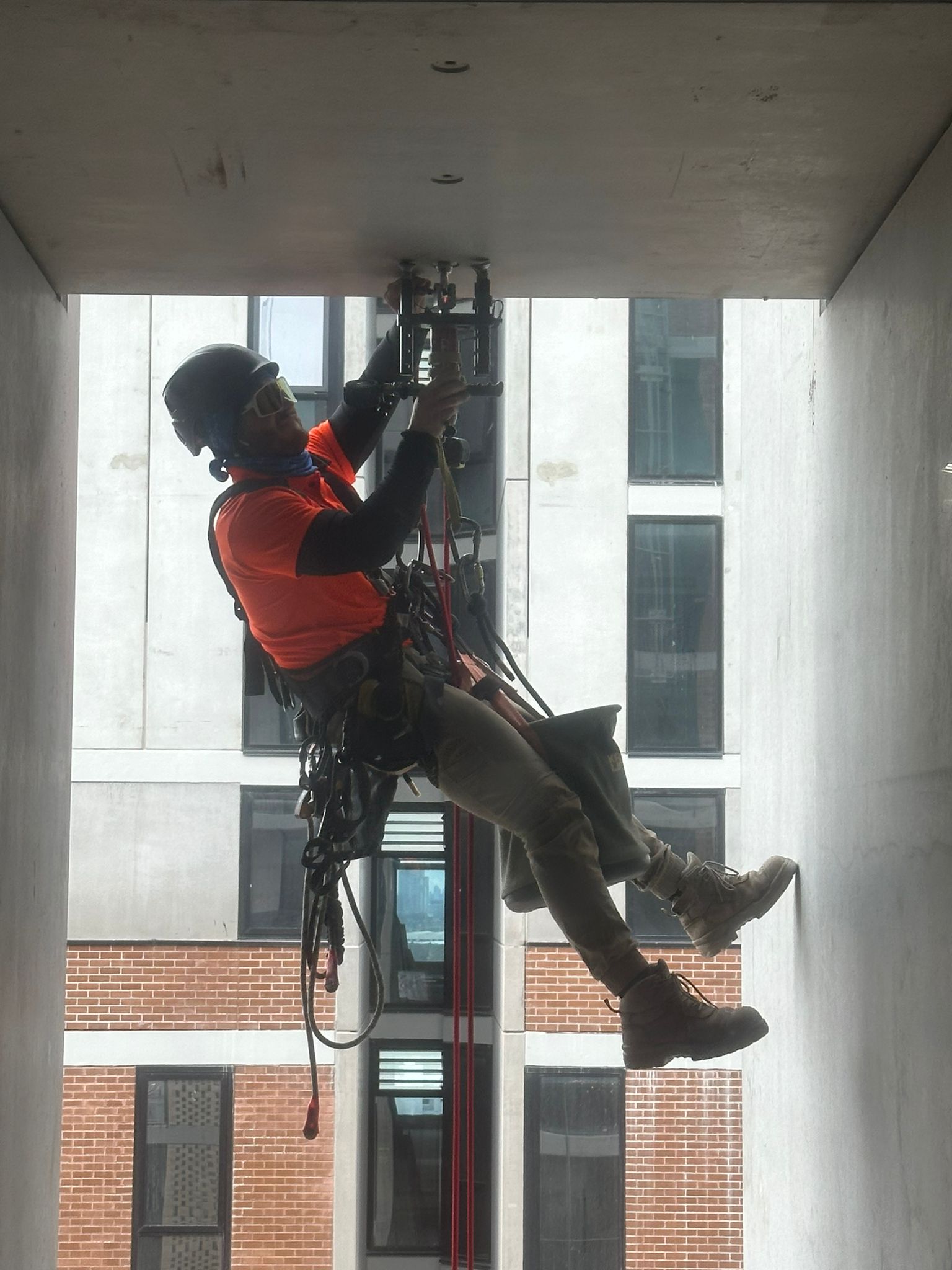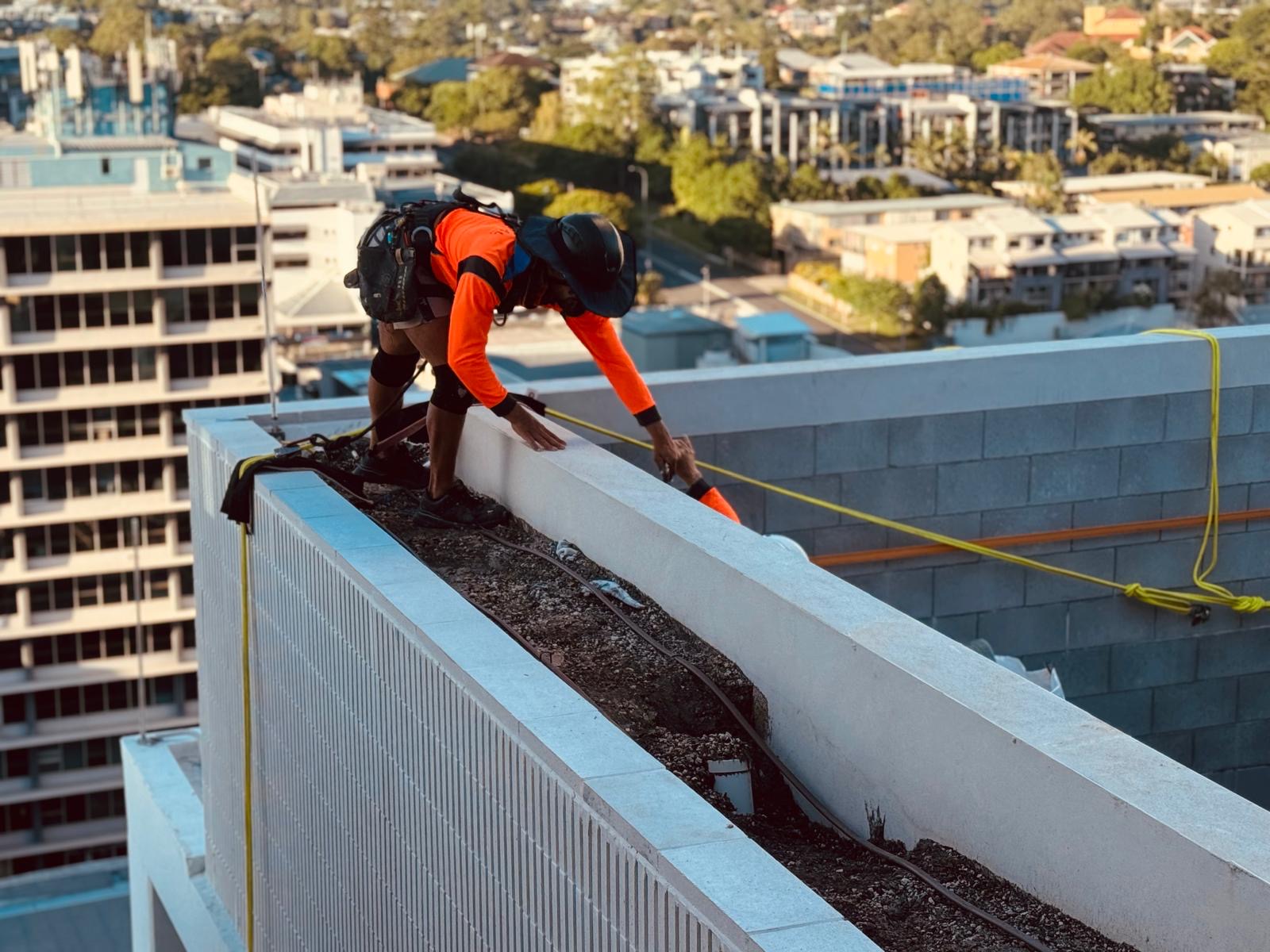Safety is a non-negotiable thing when it comes to working on heights. This is where anchor points come in. They serve as critical lifelines that allow workers to perform their duties securely.
But without regular anchor testing and anchor certification, these systems may fail when needed most. In Australia, strict safety standards and legal requirements make regular inspections and certifications important for compliance and worker safety.

What is Anchor Testing?
Anchor testing involves the thorough examination of anchor points to make sure that they can bear the necessary loads for fall protection systems. This process is important for detecting wear, damage, or degradation caused by exposure to weather and regular use.
During anchor point inspections, professionals test the installation and structural integrity of roof anchor points to ensure they meet safety standards. Regular anchor point testing is important in industries like construction and building maintenance, where fall protection systems are frequently used.
For expert roof anchor point installation and testing, check out our Anchor Point Installation Services.
What is Anchor Point Certification?
Anchor certification verifies that anchor points comply with Australian safety standards and regulations. The certification process typically includes:
- A detailed inspection of anchor points.
- Load testing to ensure durability and reliability.
- Providing a compliance certificate for legal and operational records.
Complying with anchor point testing requirements secures the safety of workers and protects businesses from legal liabilities. For more on certifications, explore our Anchor Testing & Certification Services.
Anchor Point Testing in Different Industries
Regular anchor point inspections span across various industries, each with its unique challenges and requirements. These industries rely on secure anchor points to guarantee worker safety and operational efficiency:
Construction
Construction sites are dynamic environments where workers frequently operate at heights. Regular anchor point testing ensures that scaffolds and harness anchor points are safe and functional.
Proper testing helps mitigate risks during tasks like structural repairs, roofing, and high-rise installations.
Facility Management
Building managers are responsible for maintaining the safety of structures during tasks such as window cleaning, facade maintenance, and HVAC system servicing. Regular roof anchor point certification makes sure that these systems can withstand the loads they’re designed for, reducing liability risks for property owners.
Industrial Operations
Manufacturing plants and industrial facilities often require workers to operate in confined or elevated spaces. Reliable anchor points for fall protection are crucial for performing tasks like equipment repairs, silo inspections, or assembly line maintenance.
Regular testing guarantees compliance with safety regulations and minimises downtime caused by equipment failures.
Energy and Utilities
Workers in renewable energy, such as wind farms or solar installations, depend on certified anchor points for fall protection. Testing ensures these anchors can endure harsh conditions and long-term use in challenging environments.
Telecommunications
Telecom towers and high-rise antennae installations demand robust safety systems. Regular fall arrest inspections help maintain the integrity of anchor points exposed to extreme weather or constant stress.
How Often Should Anchors be Tested?
In Australia, anchor testing frequency is dictated by safety standards, typically requiring tests every 6 to 12 months. High-traffic or harsh environments may need more frequent inspections. Regular roof anchor certification ensures compliance and offers peace of mind knowing that safety systems are in optimal condition.
Why Regular Anchor Testing is Essential
When you neglect regular testing, you run the risk of equipment failure, legal repercussions, and worker injuries. Regular fall arrest inspections are important for:
- Preventing failures and identifying wear, corrosion, or improper installation.
- Meeting Australian safety regulations and standards.
- Saving lives and providing reliable protection for workers at height.
By prioritising regular anchor inspections, businesses can mitigate risks and ensure operational safety.

Common Anchor Testing Issues
Anchor point testing often reveals problems that, if left unaddressed, could jeopardise worker safety and lead to compliance violations. Some of the most common issues you’ll run into include:
- Corrosion or Rust: Metal components of anchor points are particularly vulnerable in environments with high humidity, salinity (e.g., coastal areas), or chemical exposure. Corrosion can weaken the material and compromise its load-bearing capacity.
- Loose or Damaged Fixtures: Over time, anchor points may become loose due to vibration, wear, or inadequate installation practices. Damaged fasteners or missing bolts can render the system unsafe.
- Inadequate Load Capacity: Anchor points not meeting the required load capacity for fall protection systems are a common issue. Most of the time, it happens because of improper installation, material degradation, or the use of uncertified components.
- Improper Installation: Anchor points installed without adherence to safety standards may lack the structural integrity to support fall protection systems. This can be particularly problematic in older buildings or makeshift setups.
- Environmental Wear and Tear: Prolonged exposure to extreme weather conditions, UV radiation, or temperature fluctuations can degrade anchor materials. It leads to micro-cracks or other hidden weaknesses.
- Inadequate Testing Records: Some businesses may neglect to maintain proper documentation of previous tests and certifications. This not only puts workers at risk but also leaves the company vulnerable to legal repercussions.
Addressing these issues requires a combination of regular inspections, rigorous testing, and timely maintenance. Partnering with experienced professionals like JG Vertical ensures that any faults are identified and corrected before they get worse.
In Search of Certified Professionals for Anchor Testing?
When it comes to anchor testing and certification, expertise matters. JG Vertical provides:
- Thorough anchor testing to meet Australian safety standards.
- Professional certification services for compliance.
- Expert rope access technicians with years of experience in various rope access services.
- Additional height safety solutions, such as height safety inspections and safety net installation.
Keep your building’s anchor points for fall protection in safe hands. Contact us to schedule your next inspection.



